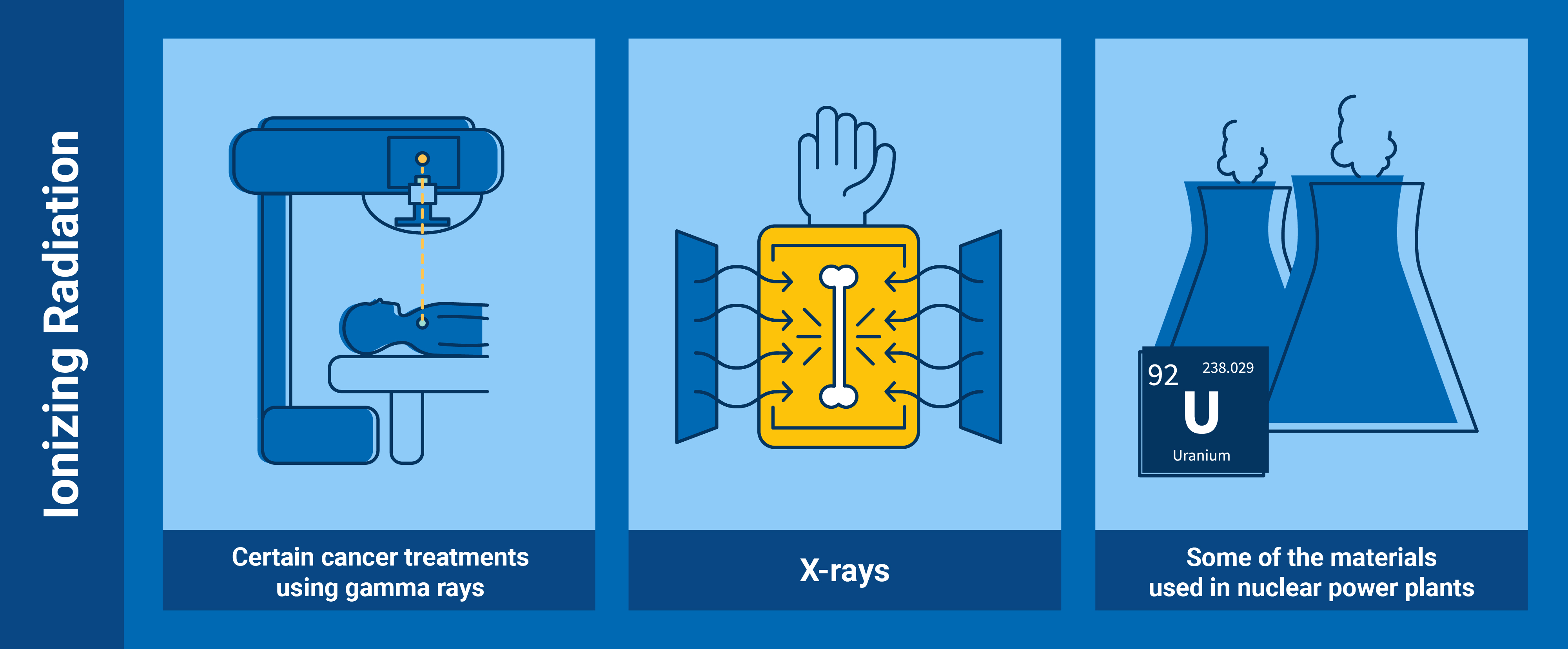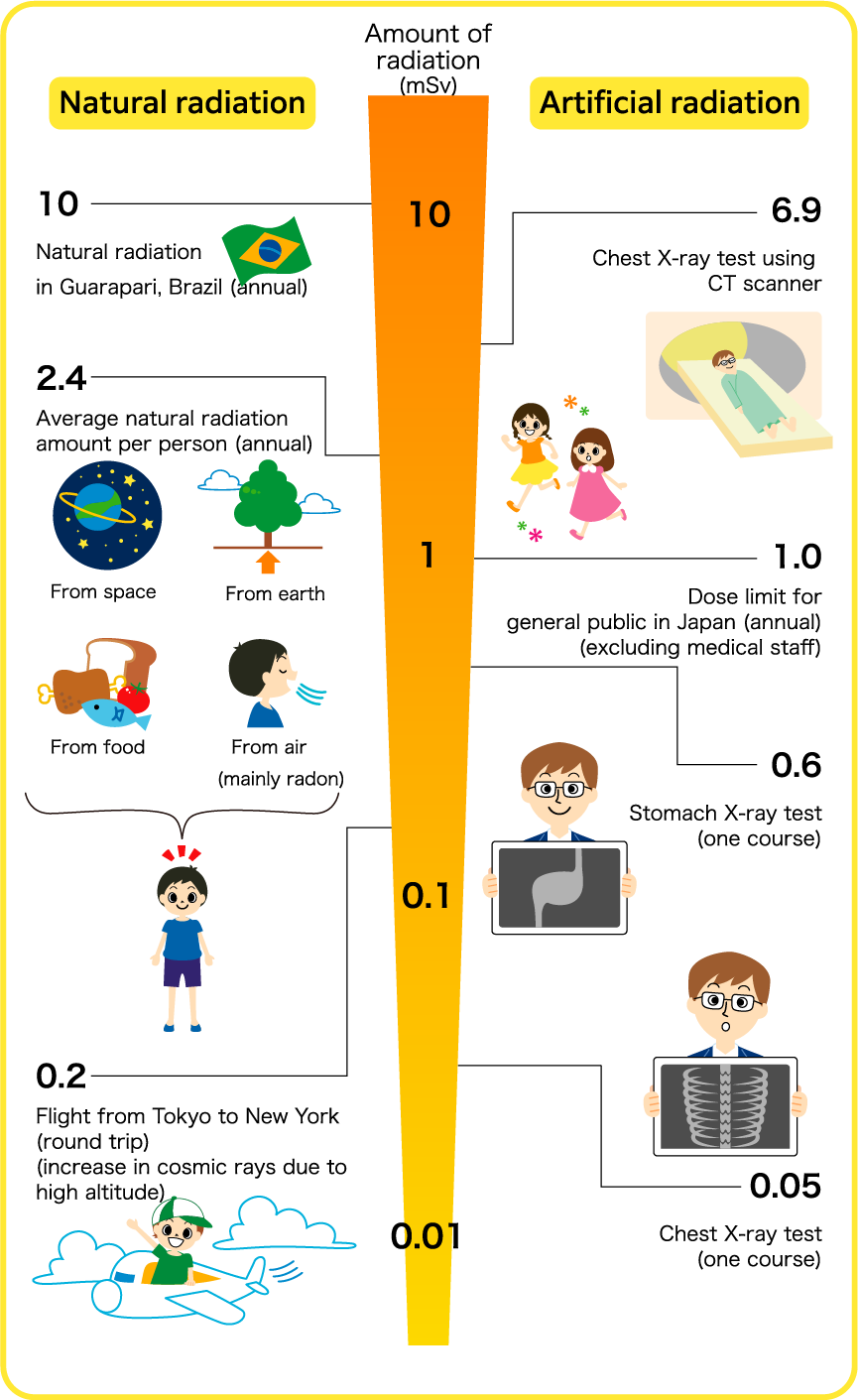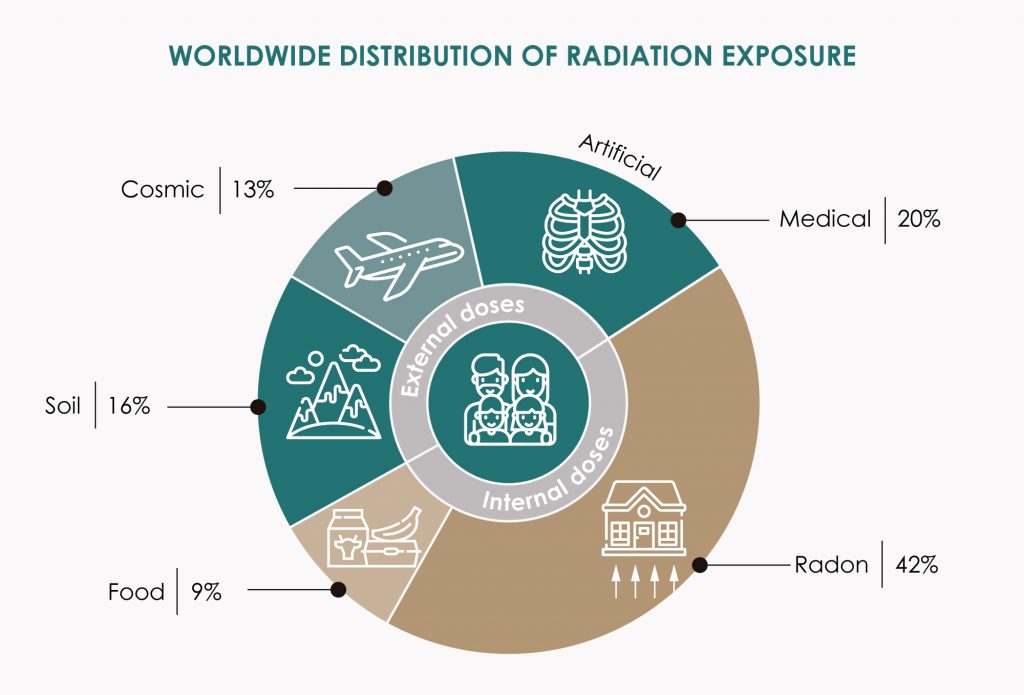Radiation is one of those things you can’t see, smell, or hear—but it can still be deadly. It’s all around us, from the warmth of the sun to the Wi-Fi signals bouncing through your home. But not all radiation is harmless. Some types can wreak havoc on the human body, causing everything from mild burns to life-threatening diseases.
So, what is the deadliest type of radiation? Is it the kind that seeps out of nuclear reactors? The radiation lurking underground in your basement? Or the one you might encounter during a medical procedure?

Radiation is energy that travels through space or matter in the form of waves or particles. Depending on its energy level, radiation can be completely harmless or extremely dangerous.
The Two Main Types of Radiation
Radiation comes in two primary forms:
| Type of Radiation | Definition | Examples | Danger Level |
|---|---|---|---|
| Non-Ionizing Radiation | Low-energy radiation that doesn’t remove electrons from atoms. | Radio waves, microwaves, infrared, visible light. | Generally safe (unless in high doses, like UV rays causing sunburn). |
| Ionizing Radiation | High-energy radiation that can strip electrons from atoms, damaging DNA and cells. | X-rays, gamma rays, neutron radiation. | Can be deadly with high or prolonged exposure. |
Ionizing radiation is the real bad guy here. It’s strong enough to break molecular bonds, mutate DNA, and cause severe health problems. If you’ve ever had an X-ray, you’ve encountered ionizing radiation, but in a controlled, low-dose environment. The real danger comes when you’re exposed to high levels over time—or all at once.
But not all ionizing radiation is equally dangerous. Some forms are easily blocked, while others can penetrate through concrete and lead. So which one is the deadliest?

Different Types of Radiation – Which Is the Most Dangerous?
Now that we know ionizing radiation is the real threat, let’s break it down further. Not all ionizing radiation is created equal—some types are relatively easy to shield against, while others can pass straight through your body, leaving destruction in their wake.
Non-Ionizing Radiation (The Least Harmful Kind)
Non-ionizing radiation is generally harmless unless you’re exposed to extreme amounts. This category includes:
- Radio waves (used in communication, like Wi-Fi and cell signals).
- Microwaves (used for cooking and radar).
- Infrared radiation (felt as heat from the sun, fires, or warm objects).
- Visible light (yes, plain old sunlight).
The only real concern? Ultraviolet (UV) radiation. While it’s still non-ionizing, high doses of UV rays can cause skin cancer by damaging DNA. That’s why sunscreen is a must. But UV rays pale in comparison to what’s coming next.
Ionizing Radiation (The Potentially Deadly Kind)
This is where things get serious. Ionizing radiation has enough energy to knock electrons out of atoms, breaking chemical bonds and damaging cells. This damage can lead to radiation burns, genetic mutations, and even cancer.
Here are the main types of ionizing radiation:
| Type of Radiation | Penetration Ability | Danger Level | Common Sources |
|---|---|---|---|
| Alpha Radiation (α) | Cannot penetrate skin; stopped by paper. | Dangerous if inhaled or ingested. | Uranium, radon gas. |
| Beta Radiation (β) | Can penetrate skin but stopped by aluminum. | Can cause radiation burns; harmful if inhaled. | Nuclear waste, some medical treatments. |
| Gamma Radiation (γ) | Extremely penetrating, can go through concrete. | One of the deadliest forms of radiation. | Nuclear explosions, radioactive isotopes. |
| X-Rays | Similar to gamma but lower energy. | Safe in small doses, but dangerous in high amounts. | Medical imaging, airport security scanners. |
| Neutron Radiation (n) | Very penetrating, not stopped by lead. | Extremely deadly, creates secondary radiation inside the body. | Nuclear reactors, particle accelerators. |
Among these, two types stand out as the most dangerous—gamma radiation and neutron radiation. These are the kinds of radiation that can pass straight through your body, damaging everything in their path.
But which one is truly the deadliest?

What Is the Deadliest Type of Radiation?
Now that we’ve covered the different types of radiation, it’s time to answer the big question: what is the deadliest type of radiation?
The two most dangerous contenders are gamma radiation and neutron radiation—both of which are extremely penetrating and capable of causing severe biological damage. But between the two, which is the absolute worst?
Let’s break it down.
Why Gamma Radiation Is Deadly
Gamma radiation (γ-rays) is one of the most feared types of radiation because it is:
- Extremely penetrating – It can pass through skin, muscles, organs, and even several inches of lead.
- Highly energetic – It damages cells and DNA at the atomic level.
- Difficult to shield against – It requires thick layers of lead, concrete, or dense materials to block.
Common Sources of Gamma Radiation
Gamma radiation is emitted during radioactive decay and is commonly found in:
- Nuclear explosions – The deadly radiation from Hiroshima and Nagasaki came largely from gamma rays.
- Radioactive isotopes – Elements like Uranium-235, Plutonium-239, and Cobalt-60 release gamma rays.
- Medical applications – While used in cancer treatments, high doses of gamma rays can be lethal.
- Space radiation – Astronauts are exposed to cosmic gamma rays beyond Earth’s atmosphere.
Effects of Gamma Radiation Exposure
Exposure to gamma rays can cause:
- Radiation sickness (Acute Radiation Syndrome, ARS) – Symptoms include nausea, vomiting, skin burns, and organ failure.
- DNA mutations – Can lead to cancer and genetic disorders.
- Cell death – High doses can destroy bone marrow and the immune system, leading to death.
Why Neutron Radiation Is Even More Lethal
While gamma radiation is incredibly deadly, neutron radiation may be even worse. Here’s why:
- Neutrons have no charge – Unlike gamma rays, neutrons don’t interact with electrons, meaning they penetrate materials even more easily.
- Creates secondary radiation – When neutrons collide with atoms in the body, they can cause those atoms to emit even more radiation inside you.
- Induces radioactivity – Neutrons can turn previously non-radioactive materials into radioactive ones, making contaminated areas dangerous for years.
Common Sources of Neutron Radiation
- Nuclear reactors – Neutrons are produced in massive quantities inside nuclear power plants.
- Nuclear weapons – Neutron bombs are designed to kill people with radiation while leaving buildings intact.
- Particle accelerators – Used in physics experiments and scientific research.
Effects of Neutron Radiation Exposure
Because neutron radiation is highly penetrating, it can cause:
- Severe internal damage – Unlike gamma rays, which mainly ionize, neutrons physically break apart atomic nuclei, leading to catastrophic biological damage.
- Increased cancer risk – Neutron exposure is even more carcinogenic than gamma radiation.
- Mass casualties in nuclear attacks – Neutron bombs, also called “enhanced radiation weapons,” are designed to release lethal neutron radiation while minimizing destruction to infrastructure.
So, What Is the Deadliest Type of Radiation?
While both gamma and neutron radiation are incredibly dangerous, neutron radiation edges out as the deadliest because:
✅ Higher penetration – It can go through even thick lead shields.
✅ Causes secondary radiation – It makes other materials radioactive.
✅ More destructive to human tissue – It physically breaks apart atomic structures inside the body.
If you were exposed to a high dose of neutron radiation, survival would be almost impossible. It’s why neutron bombs were developed as weapons—to kill people with radiation while sparing buildings.
That said, gamma radiation is still extremely deadly and far more common in nuclear accidents and radioactive decay. If you hear about radiation exposure, gamma rays are likely the biggest threat in most scenarios.
But if you ever find yourself in a high-neutron radiation environment… well, let’s just say, you’re in deep trouble.

Effects of Deadly Radiation on the Human Body
Radiation exposure isn’t like getting a cut or a bruise—it works at the molecular level, breaking down DNA, killing cells, and causing damage that can take years to appear. Gamma and neutron radiation, the two deadliest types, don’t just burn the skin; they attack your body from the inside out.
The severity of radiation damage depends on two key factors:
- The dose (measured in Sieverts, Sv) – Higher doses mean more severe effects.
- The duration of exposure – A short but intense dose can be just as deadly as long-term low exposure.
Let’s break down exactly what happens when radiation enters the body.
Short-Term Effects (Acute Radiation Syndrome – ARS)
High doses of radiation over a short period can lead to Acute Radiation Syndrome (ARS), also known as radiation poisoning. This condition is no joke—it’s what killed many first responders at Chernobyl.
Symptoms of ARS (By Radiation Dose Level)
| Radiation Dose (Sv) | Symptoms | Fatality Rate |
|---|---|---|
| 0 – 0.5 Sv | No immediate symptoms, possible long-term cancer risk. | None. |
| 0.5 – 1 Sv | Nausea, fatigue, slight blood cell changes. | Low. |
| 1 – 2 Sv | Severe nausea, vomiting, hair loss, immune system suppression. | 5-10%. |
| 2 – 4 Sv | Uncontrolled bleeding, organ damage, extreme weakness. | 50% within a month. |
| 4 – 6 Sv | Bone marrow failure, internal bleeding, severe infections. | 60-90% within weeks. |
| 6+ Sv | Nervous system shutdown, total organ failure, coma. | Near 100% within days. |
If you’re exposed to over 10 Sv, death is almost immediate due to catastrophic organ failure.
Real-World Case Study: Chernobyl First Responders
In 1986, the Chernobyl nuclear disaster exposed firefighters and plant workers to massive doses of radiation. Many received 5 to 10 Sv in minutes, leading to agonizing deaths within weeks. Some experienced skin burns so severe their flesh literally peeled away.
And here’s the worst part—they had no idea how deadly it was. Some workers walked through highly radioactive areas without protective gear, unknowingly sealing their fate.
Long-Term Effects of Radiation Exposure
Radiation damage doesn’t just happen immediately—it can linger in the body for years, leading to chronic illness, mutations, and even death decades later.
Major Long-Term Health Risks
🔴 Cancer (Especially Leukemia) – Radiation can cause mutations in DNA, leading to uncontrolled cell growth. Many Hiroshima and Nagasaki survivors developed leukemia years after exposure.
🔴 Infertility & Birth Defects – High radiation doses damage reproductive cells, leading to infertility and severe birth defects in future generations. This was seen in Chernobyl survivors’ children.
🔴 Radiation-Induced Organ Failure – Prolonged exposure can lead to gradual organ damage, especially in the lungs, heart, and kidneys.
🔴 Neurological Disorders – Some studies suggest radiation exposure increases the risk of Alzheimer’s and other neurodegenerative diseases.
Radiation vs. Other Deadly Threats – How Dangerous Is It?
To put things into perspective, here’s a comparison of radiation exposure vs. other common deadly threats:
| Danger | Lethal Dose | Time to Kill |
|---|---|---|
| Gamma Radiation | ~6 Sv | Days to weeks |
| Neutron Radiation | ~5 Sv | Hours to days |
| Cyanide Poisoning | ~200 mg | Minutes |
| Snake Venom (Cobra) | ~50 mg | Hours |
| Arsenic Poisoning | ~0.2 g | Days |
While things like poison or venom can kill quickly, radiation is insidious—it can take years to fully destroy a body. That’s why many survivors of Hiroshima, Chernobyl, and nuclear testing sites lived for years before eventually succumbing to radiation-induced illnesses.
Is There a Safe Level of Radiation?
Yes, but the key is limiting exposure over time.
The average person is exposed to about 3-6 millisieverts (mSv) per year from natural sources like radon gas, cosmic rays, and medical scans. However, doses above 100 mSv significantly increase cancer risk.
Here’s how different radiation exposures compare:
| Radiation Source | Dose (mSv) |
|---|---|
| Chest X-Ray | 0.1 mSv |
| Full-Body CT Scan | 10 mSv |
| Annual Background Radiation | 3-6 mSv |
| Chernobyl Liquidators (First Responders) | 5,000 – 10,000 mSv |
| Lethal Dose (50% chance of death) | 4,000 mSv (4 Sv) |
Moral of the story? A few X-rays won’t hurt you, but walking into a nuclear reactor meltdown? That’s another story.
Final Thoughts on Radiation’s Effects
Radiation exposure isn’t always an immediate death sentence, but the effects can be devastating. Whether it’s gamma rays silently tearing apart your DNA or neutron radiation making your entire body radioactive, the damage is real—and often irreversible.
But don’t panic! Unless you work at a nuclear plant, your daily radiation exposure is minimal. Just don’t go licking uranium or taking a vacation to Chernobyl without a Geiger counter.

Where Is the Deadliest Radiation Found?
Now that we know how dangerous gamma and neutron radiation can be, let’s talk about where these invisible killers lurk. While most of us don’t walk through nuclear disaster zones every day (hopefully), radiation is more common than you might think. Some sources are natural, while others are man-made—and both can be deadly under the right conditions.
Natural Sources of Deadly Radiation
Mother Nature doesn’t need nuclear reactors to expose us to radiation—it’s been around since the Earth was formed. Here are some of the most dangerous natural sources:
1. Cosmic Radiation from Space
- The sun and other celestial bodies emit high-energy radiation, including gamma rays.
- Earth’s atmosphere and magnetic field block most of it, but astronauts and airline pilots are at higher risk.
- Example: Astronauts on the International Space Station (ISS) receive up to 250 mSv per year—25x the annual radiation limit for nuclear workers!
2. Radon Gas in Homes
- Radon is a radioactive gas produced by the decay of uranium in soil.
- It can seep into basements and poorly ventilated homes, exposing residents to lung cancer-causing radiation.
- It’s the second leading cause of lung cancer after smoking.
3. Naturally Radioactive Elements
Some rocks and minerals contain high levels of radiation, including:
- Uranium – Found in soil, rocks, and groundwater.
- Thorium – Used in old gas lamp mantles and certain ceramics.
- Potassium-40 – Present in bananas (yes, bananas are slightly radioactive!).
Fun Fact: You’d have to eat 10 million bananas in one sitting to receive a lethal radiation dose. 🍌 (So no, bananas won’t kill you—unless you choke on them.)
Man-Made Sources of Deadly Radiation
While natural radiation is everywhere, human activity has dramatically increased exposure risks. Some of the most dangerous sources include:
1. Nuclear Weapons & Atomic Bombs
- The Hiroshima (1945) and Nagasaki (1945) bombings exposed survivors to gamma and neutron radiation, leading to tens of thousands of radiation-related deaths.
- Modern nuclear weapons are even more powerful, releasing instant lethal doses of radiation followed by long-term fallout contamination.
2. Nuclear Power Plant Accidents
- Chernobyl (1986) – Released 400 times the radiation of the Hiroshima bomb, exposing millions to deadly gamma rays and radioactive isotopes like cesium-137.
- Fukushima (2011) – A meltdown caused by a tsunami released radioactive materials into the air and ocean, with long-term environmental consequences.
3. Radiation Therapy (Medical Use of Radiation)
- Used in cancer treatment, radiation therapy deliberately destroys cancer cells—but high doses can also damage healthy tissues.
- Radiation overdoses in medical settings have accidentally killed patients (though this is rare).
4. Industrial & Scientific Applications
- Nuclear reactors – Used for energy, but can leak radiation if not properly maintained.
- Particle accelerators – Used in physics research, producing powerful radiation fields.
- Radioactive materials in industry – Used in sterilization, food preservation, and even smoke detectors (which contain small amounts of Americium-241).
The Most Radioactive Places on Earth
If you’re wondering where you’re most likely to get a lethal dose of radiation, here are some of the world’s most contaminated areas:
| Location | Radiation Level (mSv/hr) | Reason for Contamination |
|---|---|---|
| Chernobyl Exclusion Zone (Ukraine) | Up to 300 mSv/hr in some areas | 1986 nuclear meltdown |
| Fukushima Daiichi (Japan) | 40-100 mSv/hr near reactor | 2011 nuclear disaster |
| Bikini Atoll (Marshall Islands) | 15-20 mSv/hr | Nuclear bomb tests (1946-1958) |
| Semipalatinsk Test Site (Kazakhstan) | 10-50 mSv/hr | Soviet nuclear testing (1949-1989) |
| Ramsar (Iran) | 250 mSv/year (natural) | High levels of natural radiation from minerals |
Reminder: A 5 Sv (5000 mSv) dose is fatal in most cases, so spending just a few hours in these locations without protection could be deadly.
How to Minimize Exposure to Deadly Radiation
While you’re unlikely to walk into a nuclear disaster zone, there are practical steps you can take to reduce exposure:
✅ Test Your Home for Radon – Especially if you live in an area with high natural uranium deposits.
✅ Limit Medical X-Rays & CT Scans – Only get them when necessary, and ask for the lowest possible radiation dose.
✅ Stay Away from Nuclear Contaminated Sites – If you ever visit Chernobyl, follow radiation safety guidelines and don’t pick up random objects.
✅ Be Cautious with Industrial & Scientific Radiation Sources – If you work in nuclear energy or research, always wear proper protective gear.
✅ Avoid Excessive Air Travel – Frequent flyers (especially pilots and crew) get higher radiation doses from cosmic rays.
Final Thoughts on Where Deadly Radiation Exists
Radiation is everywhere—from the ground beneath us to the stars above. But while most sources are harmless, some places and situations pose serious risks. Nuclear weapons, accidents, and even natural deposits of radioactive materials can expose people to life-threatening doses of radiation.
The good news? Unless you work in a nuclear facility, a hospital, or outer space, your risk of deadly radiation exposure is low. But if you ever find yourself in a high-radiation environment, knowing how to protect yourself could save your life.